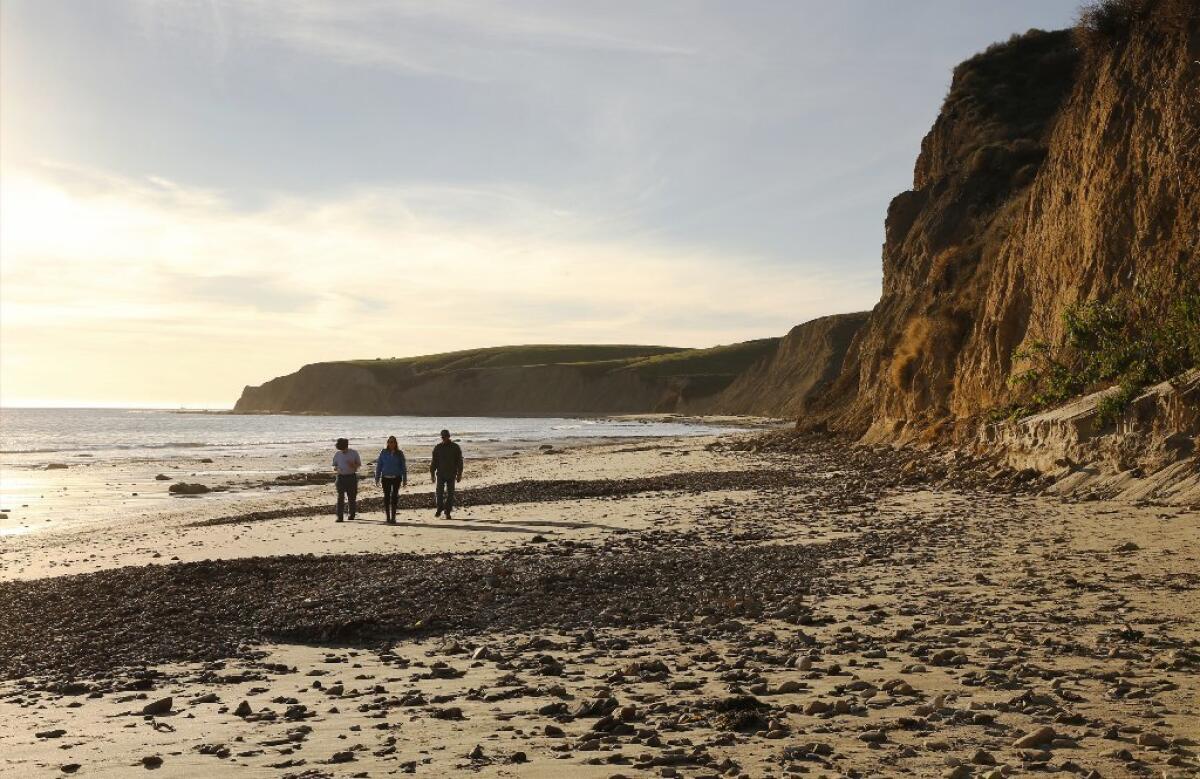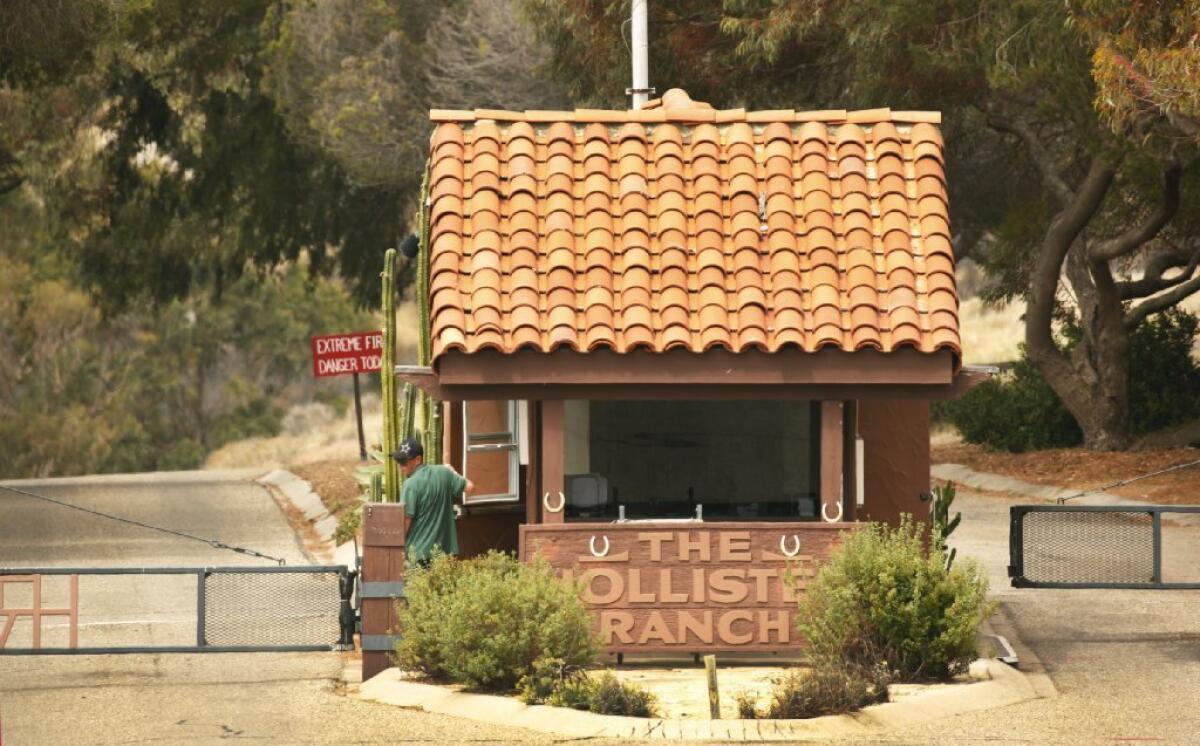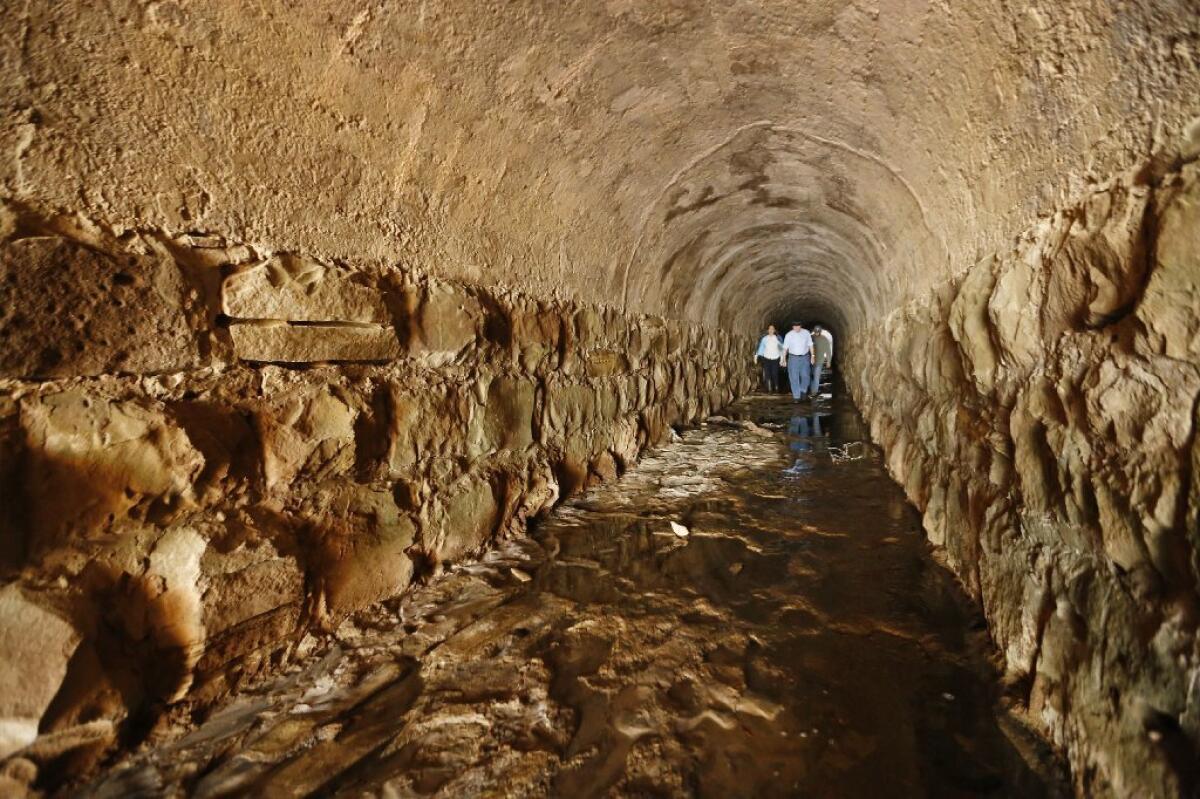In big win for coastal advocates, judge refuses to approve deal that would limit the public from reaching Hollister Ranch beaches

Reporting from Santa Barbara — In a major victory for coastal advocates, a Santa Barbara judge has refused to approve a deal that would have allowed access to Hollister Ranch’s coastline only to landowners, their guests, visitors with guides, and those who could boat or paddle in from two miles away.
The settlement agreement, struck between the ranch and coastal officials behind closed doors, sparked public outrage last year after The Times published terms of the deal. The outcry became a flashpoint in the mounting pressure on state officials to ensure that California’s beaches are open to everyone — not just to those fortunate enough to own oceanfront property.
Hundreds of people have since lambasted the deal, calling on officials to fight harder against the ranch to open some of California’s most coveted beaches and surf breaks — still behind private gates after decades of legal battles and stalemates.
The backlash culminated in a coalition of advocates challenging the deal in a court intervention — stepping in, they said, to speak up for the public where the state had faltered.
Santa Barbara County Superior Court Judge Colleen Sterne, in her ruling Friday, agreed that the public’s interest was not fully represented.
“Plaintiffs [Hollister Ranch] have not met their burden to show that the Class Settlement is fair and reasonable,” she said.
In a careful ruling, Sterne did not reject the settlement outright. Citing the unusual situation with the public intervention, she instead established a legal path forward for advocates to make the case that the deal should be thrown out completely. Next steps include suing the state for failing to hold a public process before making the deal with Hollister landowners.
The coalition, the Gaviota Coastal Trail Alliance, said the ruling was a step forward in an almost 40-year battle that has pitted beachgoers against ranch owners, who long have contended that unfettered access would undo years of careful work to protect the land.
“Hollister threw everything that they could at the last hearing, and they did not prevail,” Susan Jordan of the California Coastal Protection Network said. “Now we can move forward and restate all the ways that we think this settlement is a bad deal for the public — and frankly, illegal.”
Read more: Coastal advocates challenge deal that bars public from reaching Hollister Ranch by land »

Beth Collins, one of the attorneys representing Hollister Ranch, declined to comment on the ruling while the litigation is ongoing.
During her arguments in a packed courtroom last month, Collins made the case for ending the legal battle and questioned whether the advocates could represent the general public more than state agencies like the California Coastal Commission and the Coastal Conservancy.
“This has been a long, expensive, contentious and hard-fought litigation,” Collins said. “The opinion of one special interest group simply cannot undermine … final approval.”
Coastal officials said Monday that they were reviewing the court decision to determine next steps. In a statement to The Times, Coastal Commission Executive Director Jack Ainsworth said they were “looking forward to resolving this issue in a manner that’s in the best interest of the public.”
Sam Schuchat, executive director of the Coastal Conservancy, said that “throughout this process, the Conservancy has sought the best outcome for the people of California, both in terms of public access and balancing the risks and costs of continued litigation. If, through this ruling, the court believes the outcome of the case could be more favorable to the public, we are happy to pursue that.”
“Whatever the outcome of the lawsuit,” he said, “the Conservancy and the Commission are committed to working to develop broader public access to Hollister Ranch.”
There are now two separate but high-profile efforts underway to open Hollister’s beaches to the general public: The settlement, now in limbo, and a new push by the state, responding to the public outcry, to implement a comprehensive access program to the ranch’s 8.5 miles of coastline.
Fighting for access on both fronts, advocates say, is not only strategic but also a matter of principle.
In court, the battle centers on a decades-old dispute over a rugged road that the YMCA had offered in 1982 as a public access way — as a condition of approval for a recreation center.
Ranch owners successfully sued in 1982 to halt the YMCA’s construction and obtained the property as the result of a settlement. Attorneys since have argued that the proposed access way should be canceled because the YMCA never had the authority to grant it to the state.
In the deal last year, officials agreed to give up any claim to this public route.
In return, the public was granted a roughly three-quarter-mile section of beach, accessible only by ocean “via surfboard, paddleboard, kayak or soft-bottom boat.” The beach is about two miles from Gaviota State Park beach.
Landowners also agreed to expand the Hollister Ranch Managed Access Program. This includes inviting disabled veterans and other underserved groups on guided trips, and providing at least 24 opportunities a year for K-12 groups of at least 20 students to learn about tide pools and marine ecosystems.
These programs would have been funded by Coastal Conservancy money, according to the settlement terms. Critics said this was an insult to the original intent of public access and further hampered the state’s ability to fight for more access in the future.
The public backlash over the deal was fierce. Hundreds of beachgoers emailed the state, worried that coastal officials were giving up the access fight at Hollister in favor of landowners.
Officials in response had said that after so many years of dispute, the deal at least would have provided the first opening of any public access at the ranch.
The route itself also involves walking through a drainage tunnel that can open into a steep and sudden drop, depending on the amount of sand. Making this trail safe for the general public, officials said, would be challenging and costly.

Jamee Jordan Patterson, deputy state attorney general representing the Coastal Commission and Coastal Conservancy, said that they did not drop the ball on fighting for access.
“Public access is their job. They’re not pushovers,” Patterson said in a packed courtroom last month. “Do we want more access out there? Yes. ... Is this the right way to get it? My clients don’t think so. There are other avenues that could be pursued.”
Some at Hollister have also expressed their desire to end this specific court battle, acknowledging that other efforts are now underway to establish access to the ranch’s coastline which they hope will balance environmental protection, property rights and public access.
Dozens of owners and ranch supporters, in detailed emails and public testimonies, have pleaded their case to the commission. They point to the temporary access they already grant to scientists, academics, historical societies, environmental groups and schoolchildren, and question how someone unfamiliar with the rugged terrain could safely navigate the steep canyons, unpaved roads and high tides without cellphone service.
Public anger over the settlement pushed officials last year to dig through old records and uncover other ways to obtain access at the ranch. Their latest strategy now relies on updating a ranch-wide access program that the state had adopted in 1982 after a complicated legislative history which had faded from institutional memory.
The program includes a walking trail and bicycle lane that would run parallel to the ranch’s main private road. To minimize the number of cars, a van would run from nearby Gaviota State Park to six Hollister beaches, where there would be picnic areas and bathrooms.
The Coastal Commission, along with the Coastal Conservancy, the State Lands Commission and State Parks, is working quickly to update the plan.
The public’s demand for more access was a wake-up call, officials said. A state email account has been established to collect ideas and public input on what an access plan today should include, and a public workshop will take place in the coming months.
Another strategy in recent months appears to be blocking new development permits coming in from Hollister owners. The commission last year challenged a ranch owner seeking to build a new house, guesthouse and footbridge — citing for the first time in decades that a condition of any permit, under the California Coastal Act, is providing public access in a timely manner.
Another owner’s permit for a new swimming pool was appealed this month by commissioners on similar grounds.
“We’ve advanced and broadened the conversation way beyond where we were a year ago,” said Coastal Commissioner Mark Vargas, who has been pushing to open the ranch beyond the YMCA parcel and trail since the terms of the settlement were laid out to the public. “The uproar has sparked a debate and awareness of a much larger issue, which is access to the entire Hollister Ranch coastline.”
“Now we need to keep this momentum going,” he said, “and follow through on what needs to be done.”
Interested in coastal issues? Follow @RosannaXia on Twitter.
More to Read
Sign up for Essential California
The most important California stories and recommendations in your inbox every morning.
You may occasionally receive promotional content from the Los Angeles Times.










